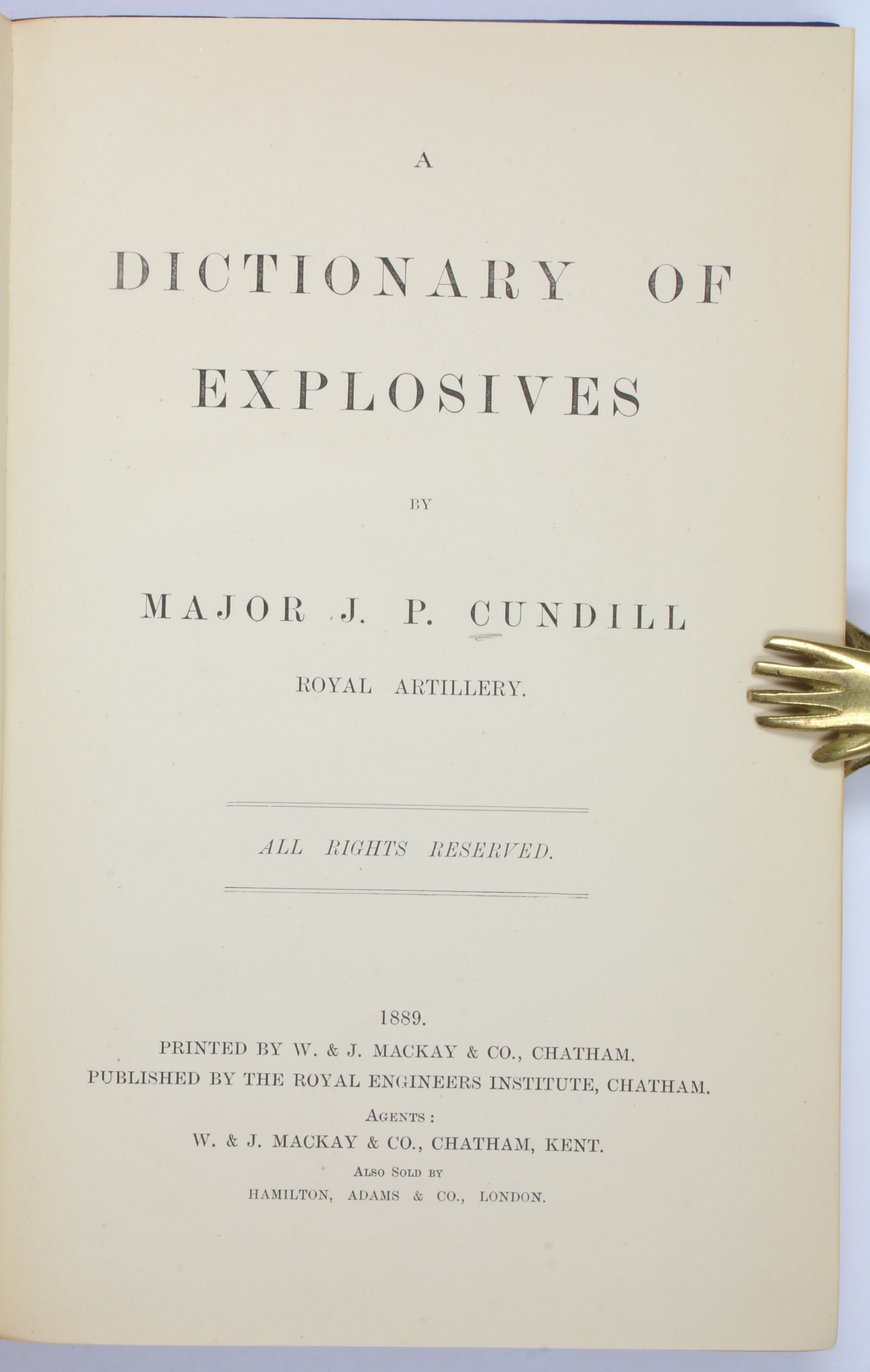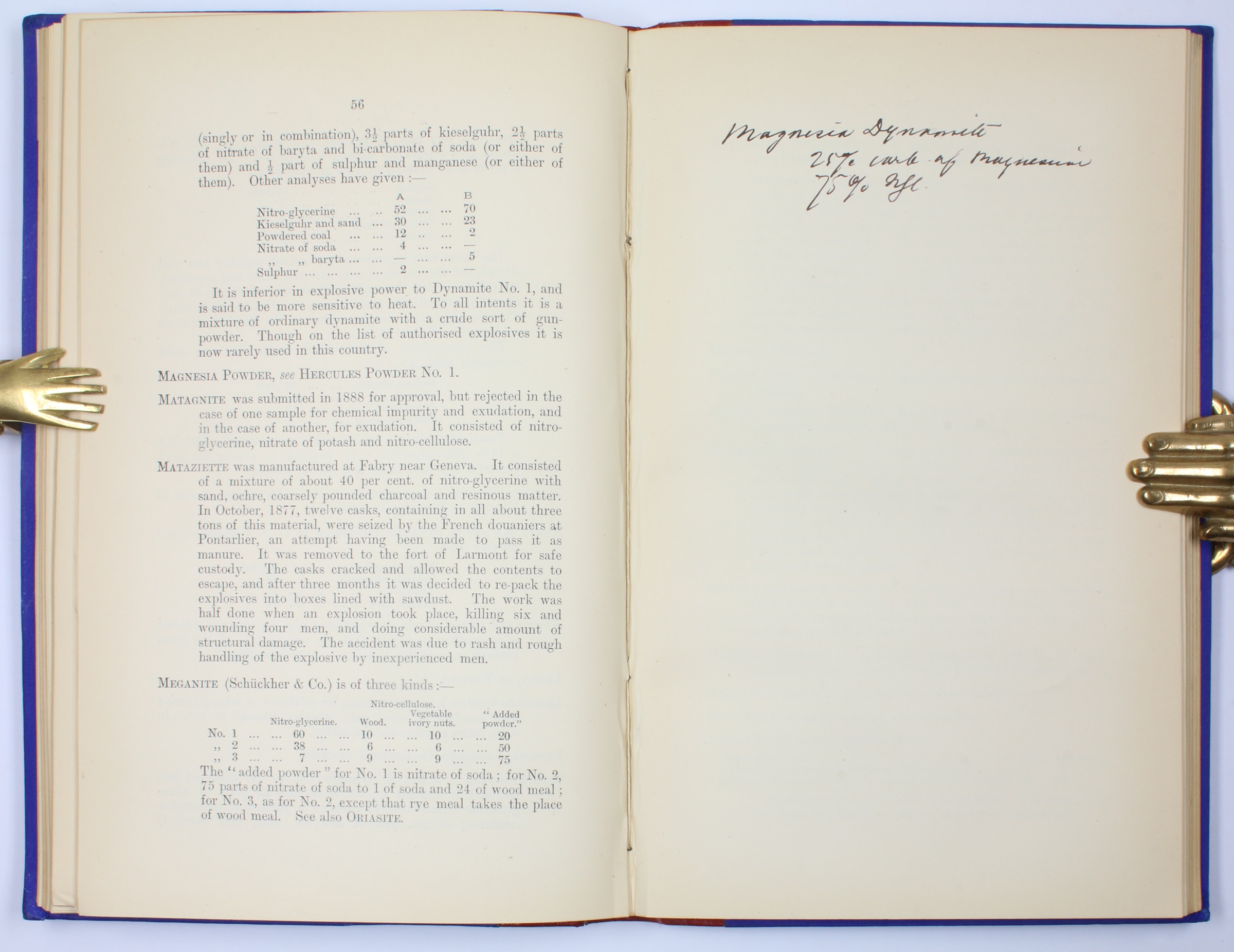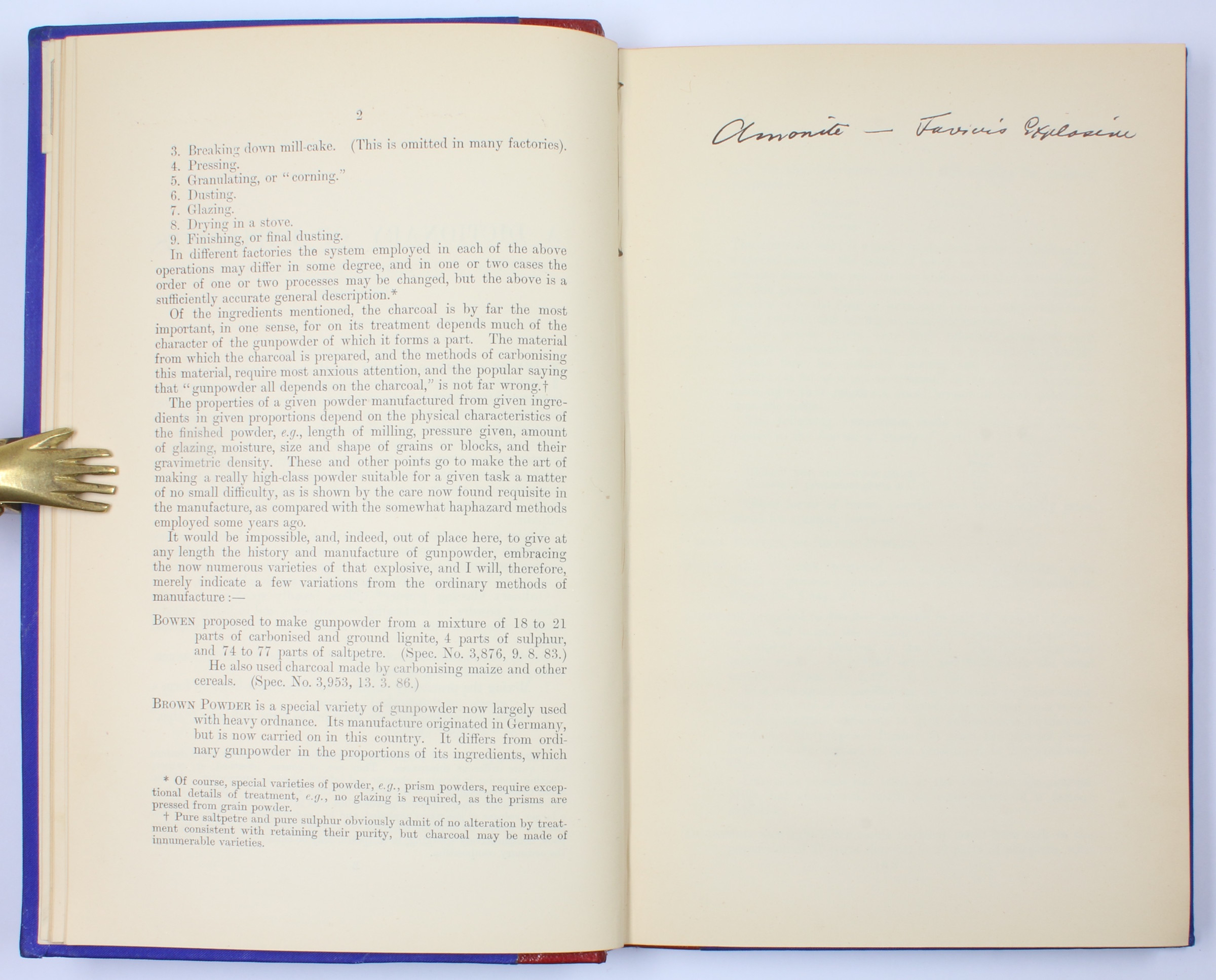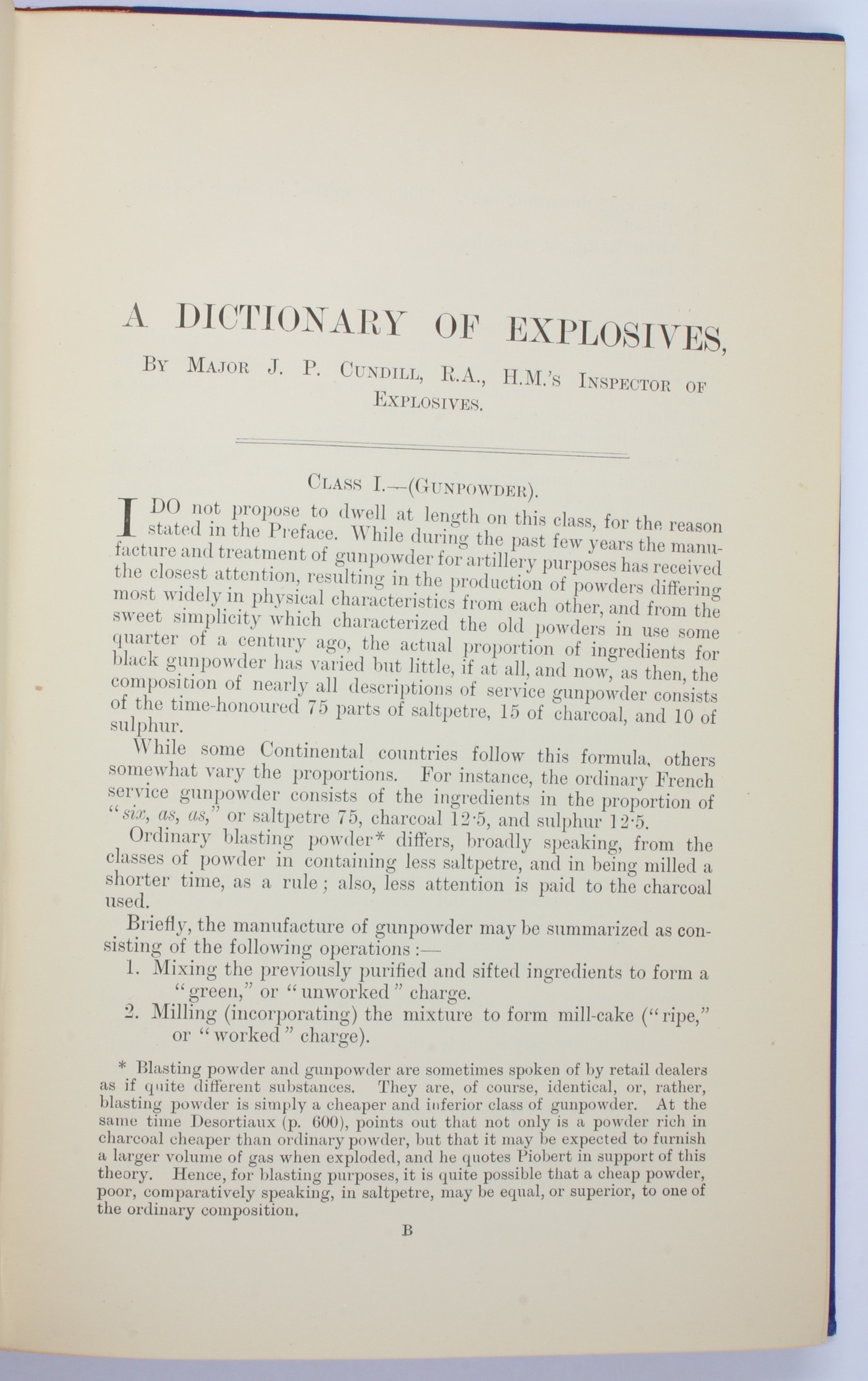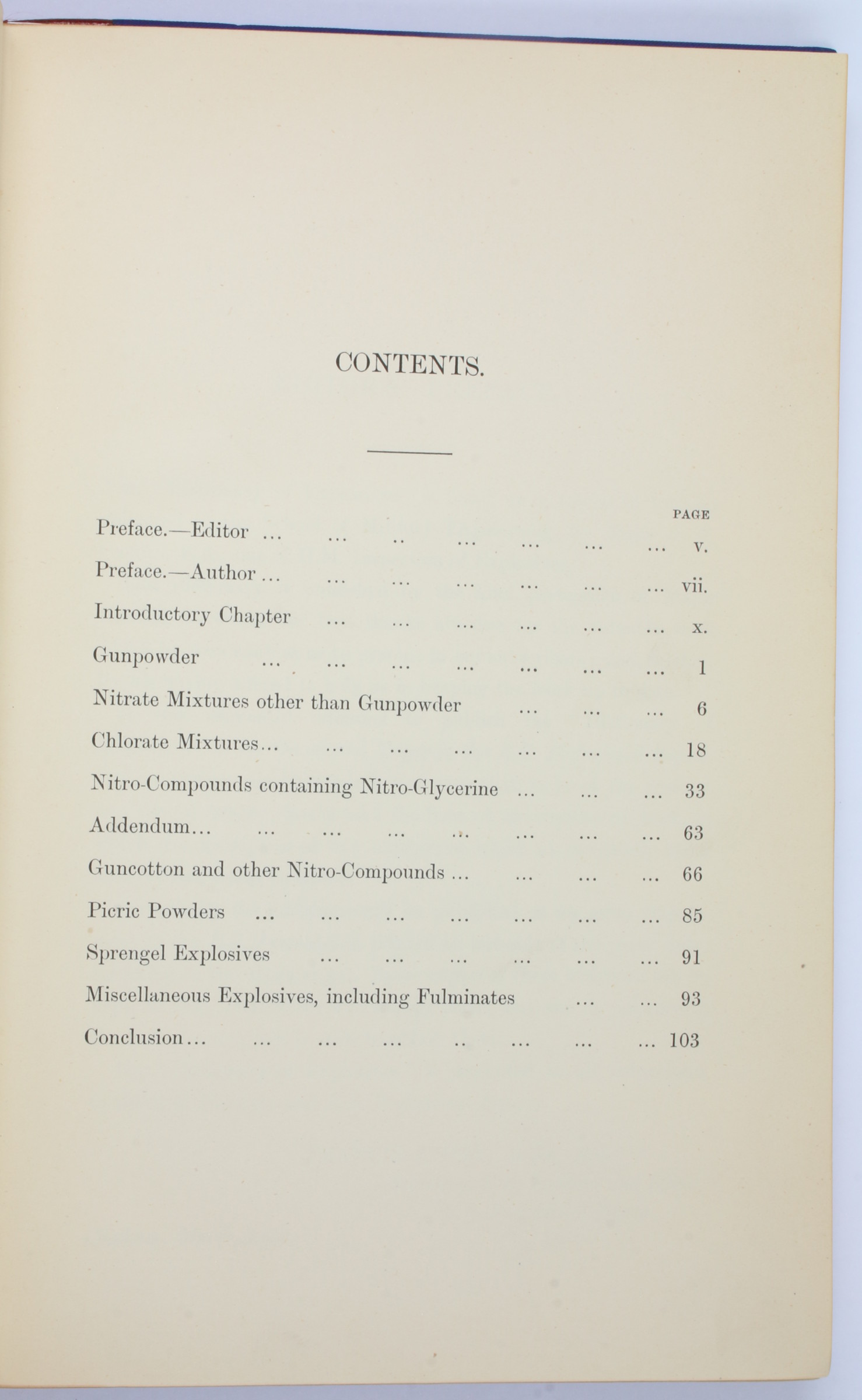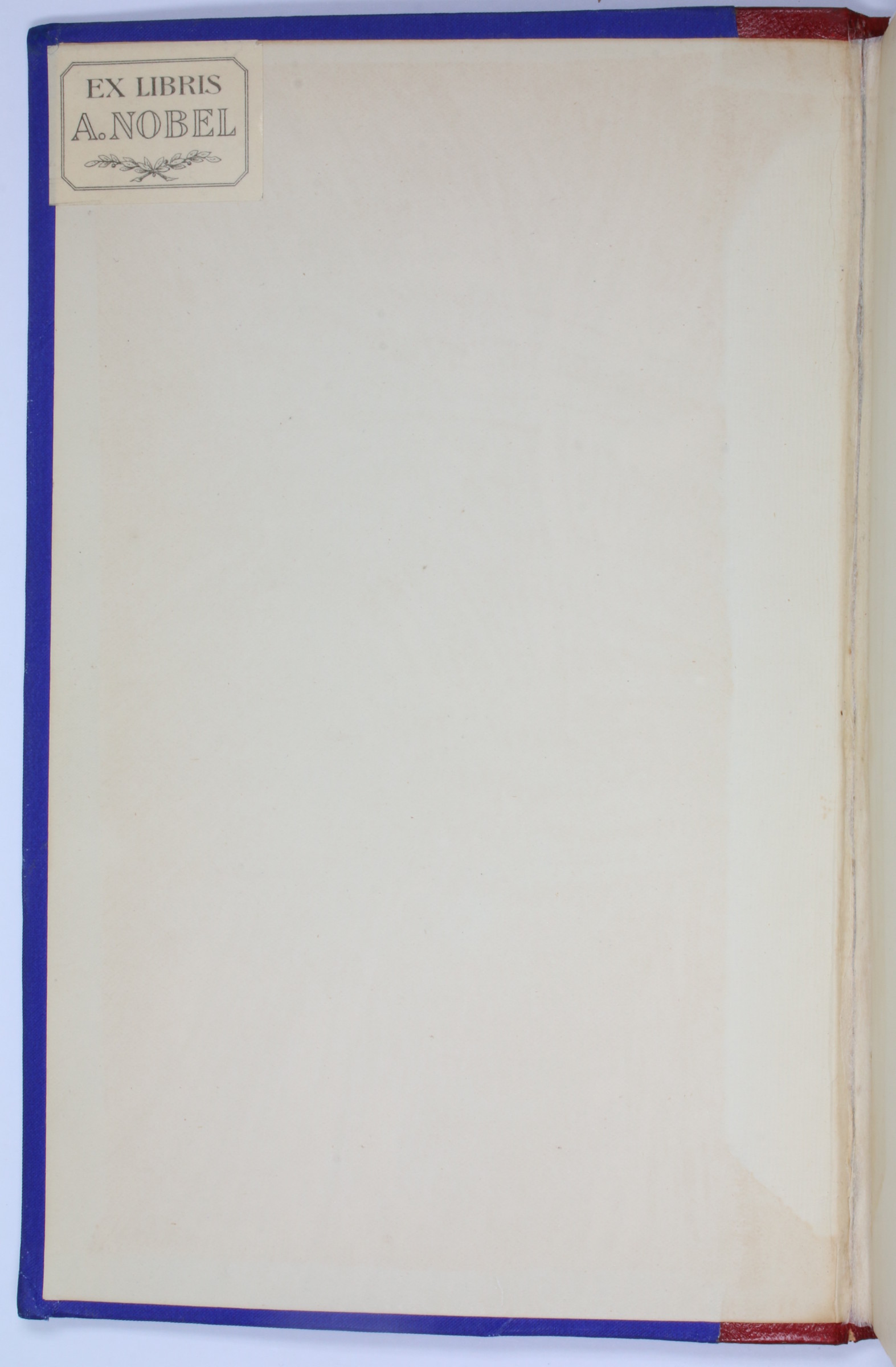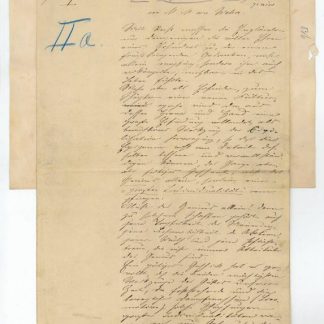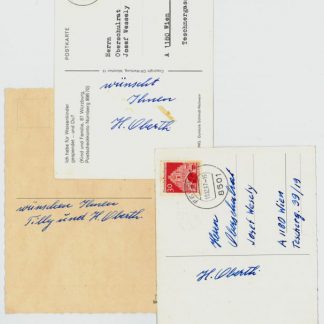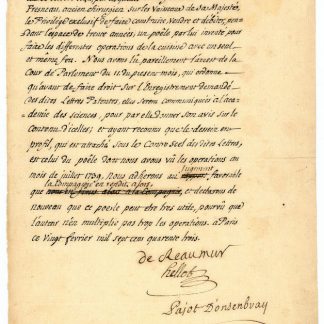Alfred Nobel's copy of A Dictionary of Explosives, with notes in his hand
A Dictionary of Explosives.
8vo. XVI, 109, (6 blank) pp. Interleaved, with one blank leaf between each paginated leaf for the purpose of note-taking. Contemporary blue cloth backed with red morocco spine ruled in blind and titled in gilt.
Alfred Nobel's (1833-96) personal copy of this very uncommon early work on the chemistry of explosives, with the bookplate reading "Ex Libris A. Nobel" on the front pastedown and notes in Nobel's own hand in three different instances. Nobel, best known today for bequeathing his wealth on the eponymous Nobel Prize fund, was the Swedish inventor of dynamite, the first safely manageable explosive stronger than black powder. He is mentioned numerous times in the text of dictionary itself, receiving credit for his many inventions, patents, and experiments with different compounds.
Nobel's handwritten notes, made on the blank leaves bound between each printed leaf for the purpose, are tidily sorted alphabetically along with the text. Facing p. 2, Nobel notes, "Amonite - Favier's explosive". Today, a Favier explosive refers to any of several explosive mixtures, chiefly of ammonium nitrate (written here as amonite). Nobel would have been quite aware of the use of ammonium nitrate, in part thanks to the 1885 invention of "Extra" Dynamite by an American competitor, Russell S. Penniman, who replaced nitroglycerine with slightly less powerful ammonium nitrate.
Nobel's second note faces p. 56 and records a basic explosive compound, reading, "Magnesia Dynamite. 25% carb. of Magnesium 75% Ngl.". Nobel was already using a small amount of magnesium carbonate ("carb. of Magnesium") to stabilize his 1875 invention of Blasting Gelatin, which also had a very high percentage of nitroglycerine (93-95%, comparable to standard dynamite's 20%-60%). Magnesia Dynamite appears to have been produced in small quantities, and the formula is preserved here in Nobel's hand. The third note faces p. 58 and provides another compound: "Petragite, also called nitro-mélasse, consisting of nitrated molasses, nitrated wood-meal and nitrate of Potassium".
Light exterior wear, a few pages lightly wrinkled, text and inscriptions bright and clean. Autographs by Alfred Nobel appear rarely on the market; a unique association like the present one has not been seen for decades.

